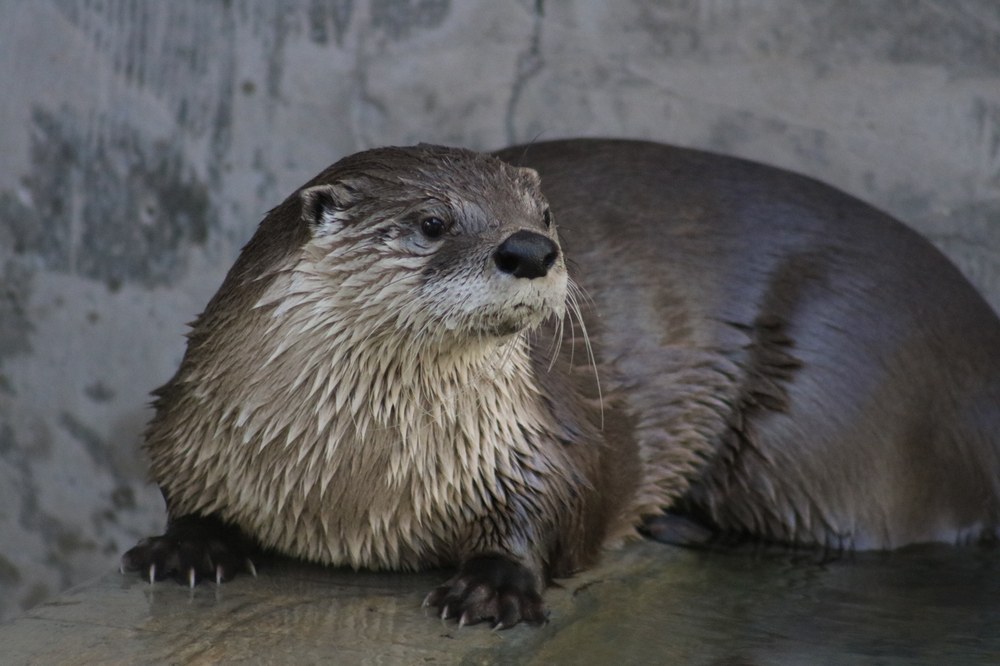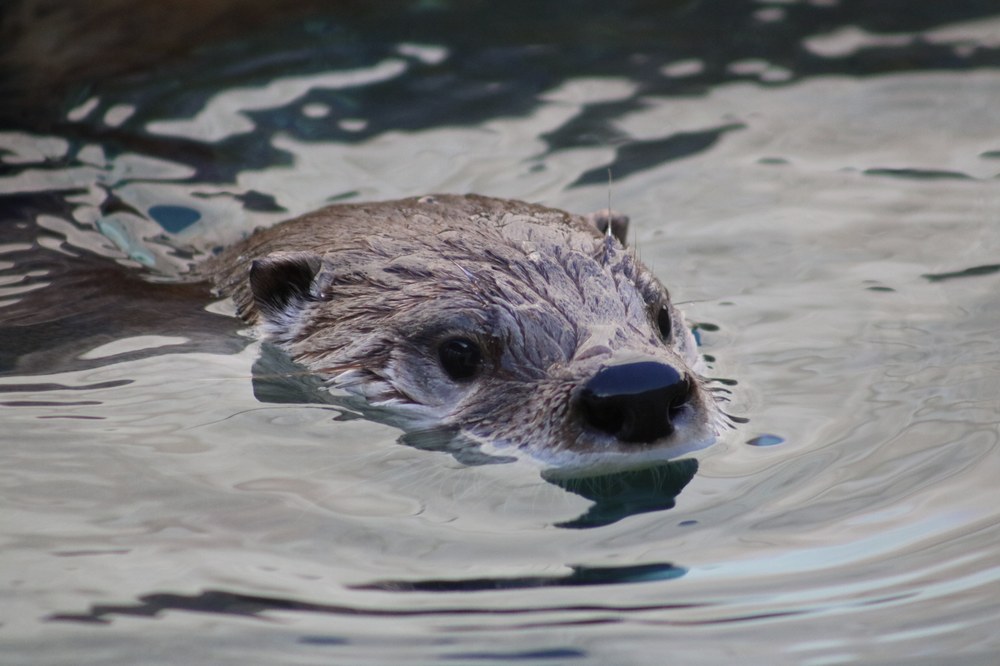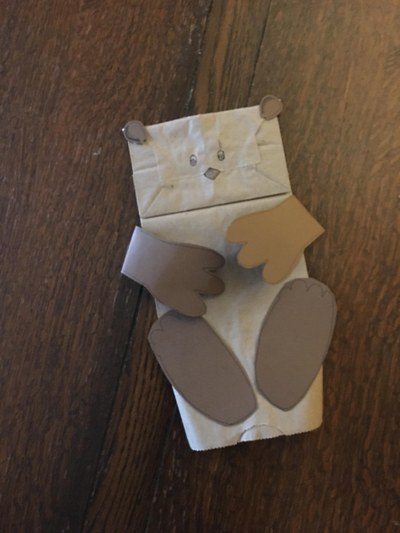River Otters
Learn about river otters, make a river otter craft and do an otter word scramble.
Goal
Make a splash and further explore the extraordinary world of river otters! Learn about the river otter ambassadors at the ABQ BioPark, and discover how your simple actions at home can help this species.
Introduction to Animal

Otters are playful little critters that are often found living near wetlands and generally seen in freshwater but also in saltwater bodies. How can a mammal be adapted to being in water? River otters have streamlined bodies, suited with short legs and webbed feet, like flippers. Their fur is thick, dense and layered with oils to help them dry quickly; even in the frigid winter temperatures they are able to stay warm. River otters are found in nearly every habitat in the world, excluding arid deserts and treeless Arctics. Native to New Mexico’s Gila River, upper and middle Rio Grande and Canadian River, the North American river otter's range extends into the northern frontier of Canada and Alaska.
River otters are very dependent on the accessibility of water for both shelter and food source. Because of this, the river otter is viewed as a keystone species, meaning they are a good species indicator for local water quality and the stream health of river communities.
River Otter Conservation

Pollution, deforestation and unregulated trapping caused their decline and eventual disappearance by the 1950s in New Mexico. Thanks to a reintroduction program supported by federal and state government agencies, local Native American tribes and non-profit conservation organizations, otters have now returned to New Mexico.
Every time we help protect the Bosque, we are protecting river otters and all other inhabitants. Here are some things you can do to enjoy and protect our section of the Bosque:
- Go outside and take a walk. Watch birds and find out what animals, plants and other living things are around you and in your watershed.
- Be a responsible pet owner by disposing of your pet's waste. Feces entering the waterway can be very harmful to both the environment and your safety.
- The use of pesticides could potentially kill bees and other beneficial insects. Rather than using harmful chemicals on the ground, plant native plants. Native plants are easier to maintain, cheaper, and you’ll have a more successful garden. Unearth the importance of native plants in your garden.
River Otters at the ABQ BioPark
Labeled “nuisance otters,” females Chaos and Mayhem were named as such because they were causing a fuss on a Louisiana shrimp farm. And the ABQ BioPark Aquarium recently welcomed our newest river otter, Dixon. Dixon comes from the Columbus Zoo and Aquarium. He was born in 2012 at the New York Bronx Aquarium. As of April 2020, the 8-year-old male is still getting adjusted to his new home.
Dixon came to the BioPark through a conservation program, called a Species Survival Plan (SSP). The ABQ BioPark is part of a greater network of other zoos and aquariums, which participates in SSPs. This model is used for population management and conservation programs for selected species of wildlife to increase genetic diversity. Although river otters' conservation status is listed as “of least concern” in the wild due to reintroduction efforts, this is one practice that zoos and aquariums are doing in order to ensure that future generations are genetically diverse.
At the BioPark, all animals are provided with plenty of enrichment that is used and tailored to stimulate cognitive and physical activity. This concept is very similar to when you give your pet a new toy or treat. For our river otters, this could include playing classical music, adding spices and scents around their exhibit, giving them a variety of different food options and much more!
Activity Description: Construct your own Holt (K-5th)
Unlike beavers who build their own dens, otters often occupy abandoned burrows of other animals and then collect nesting materials like branches and twigs to create a cozy home for their pups. Holts are usually near water and often have inconspicuous underwater entrances. Are there any existing structures in your home that you can build upon? What nesting materials will you collect?
Materials
- Any household item (i.e. blankets, pillows, sheets, towels, cardboard and etc.). Get creative!
Activity Method
- Using your imagination, build your own holt! Collect any household items as your nesting materials and place them along your existing structure.
- Do you have multiple entrances into your holt?
- Are you well hidden from predators?
Activity Description: Paper Bag Puppets (PreK - 5)

Materials
- Paper lunch bag and/or brown grocery bag
- Dark brown cardstock
- Permanent marker
- Scissors
- Tape and/or glue
- Color pencils/crayons/markers
Activity Method
- Use the paper lunch bag as the base of your river otter.
- Cut out two small round shaped ears with the dark brown cardstock and place them on the top corners of the bag.
- Additionally, cut out two long sheets of dark brown cardstock that will be used for both a left and right arm. Glue the arms on the back side of the puppet and bend the “elbow” of the arms.
- With the remainder of the dark brown cardstock, cut out two round shaped feet. Place them on the bottom corners of the bag.
- Decorate the face of your river otter.
- Investigate river otters' diet!
- What makes river otters carnivorous?
- What type of behaviors or adaptations do river otters need to catch/eat their normal diet?
Otter Word Scramble
Download a fun river otter word scramble with answers!
Additional Resources
- Swim with the river otters at the Tennessee Aquarium by virtually touring their exhibit! Check out the River Otter Live Camera to discover more.
- With your Albuquerque Public Library card you can access thousands of eBooks, audiobooks, and digital downloads on the go. Uncover the world of otters by checking out Pup the Sea Otter (Ages 0 - 8).
